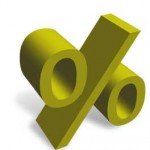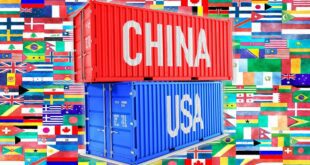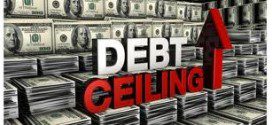It seems that the past few years of falling interest rates have lulled a big part of the global economy into financing with variable-rate debt…[As such,] when interest rates go up (as they did last week), there’s a world-wide reset in interest costs that, best case, amounts to a tax increase on individuals and businesses and, worst-case, threatens to blow up the whole system.
global economy into financing with variable-rate debt…[As such,] when interest rates go up (as they did last week), there’s a world-wide reset in interest costs that, best case, amounts to a tax increase on individuals and businesses and, worst-case, threatens to blow up the whole system.
So writes John Rubino (www.dollarcollapse.com) in edited excerpts from his original article* entitled Variable Rate World, Part 1: Staring Into the Abyss.
[The following article is presented by Lorimer Wilson, editor www.munKNEE.com and may have been edited ([ ]), abridged (…) and/or reformatted (some sub-titles and bold/italics emphases) for the sake of clarity and brevity to ensure a fast and easy read. This paragraph must be included in any article re-posting to avoid copyright infringement.]
Rubino goes on to say in further edited excerpts:
Interest rates soared again last week. This weekend a lot of people are running a lot of numbers and getting some terrifying results.
The Adjustable Rate Mortgage (ARM) Rate
The…adjustable rate mortgage (ARM), which is basically a teaser-rate home loan that rises over time towards the prevailing 30-year fixed rate, jumped from 3.5% to 4.5% in just the past month, which means ARM resets are now aiming at a higher target. For ARM holders, the resulting higher monthly mortgage payment is exactly like a pay cut or tax increase, leaving less around at the end of the month for new cars, vacations, etc. so discretionary spending drops and, other things being equal, the economy slows down. This is serious for a system that, when evaluated using real numbers, is already in recession.
The Long-term Bond
Retail investors poured about $1 trillion into bond funds between 2009 and 2012, in part because bonds had been going up pretty much forever and, in part, because investors were scared and bonds were sold by credulous financial planners as safe. For a while it worked with bond prices soaring as long-term rates kept falling, which helped both individuals and pension funds rebuild capital lost during 2009’s debacle. Since the beginning of this year, however, US bond funds have seen $60 billion depart, while bonds themselves have fallen hard… The following chart shows the price of US 20-year Treasuries, which are down by almost 15% since April.
In other words, the “safe” part of individual and institutional portfolios is tanking. Here again, this is like a big pay cut which makes the holders of these funds less rich and therefore less likely to spend money.
Sovereign Debt
The real systemic risk enters with sovereign debt. One of the many ways the U.S., Japanese and European governments hide the effects of their mounting debt is by doing most of their borrowing for short periods of time, a few months to one year, where rates are close to zero and money is effectively free. In some cases short-term rates have fallen faster than borrowing has risen, producing lower interest costs even while debt has been piling up. Now, with long-term rates rising, governments have a choice:
- roll their maturing long-term debt into very short-term paper, which would keep interest costs down but make it necessary to roll over even more debt each year,
- keep the maturity of their debt constant and see their interest costs rise dramatically or
- have their central banks buy even more debt and write off the interest, which might prolong the lie for a while, but at the risk of a tidal wave of newly-created currency wreaking various kinds of havoc.
Hedge Funds
Hedge funds and money center banks have created hundreds of trillions of dollars of interest rate swaps, in which holders of a security that pays a fixed rate of interest exchange this income stream for a variable stream based on some benchmark interest rate. The players on the variable-rate side of the bet lose big if rates keep rising and most money center banks and many, many hedge funds are in this position. All it will take is a few of them to be overwhelmed by these bets going sour to pull down the whole show — exactly as happened with credit default swaps in 2009.
Conclusion
The interesting (if that’s not too neutral a word) thing about all this is that all the events mentioned here will happen simultaneously if rates keep rising.
- ARM and bond fund holders will have less money to spend, slowing economic growth;
- governments will see their interest costs spike, making borrowing more expensive and risking a flight from their now clearly-mismanaged currencies; and
- derivatives markets will see growing instability in interest rate swaps, which might threaten rest of the rat’s nest that is the global banking community.
All of the above will transpire all because interest rates return to historically normal levels!
[Editor’s Note: The author’s views and conclusions in the above article are unaltered and no personal comments have been included to maintain the integrity of the original post. Furthermore, the views, conclusions and any recommendations offered in this article are not to be construed as an endorsement of such by the editor.]
*http://dollarcollapse.com/interest-rates-2/variable-rate-world-part-1-staring-into-the-abyss/ (Copyright © DollarCollapse.com)
Related Articles:
1. Rising Interest Rates Could Plunge Financial System Into a Crisis Worse Than 2008 – Here’s Why
If yields on U.S. Treasury bonds keep rising, things are going to get very messy. What we are ultimately looking at is a sell-off very similar to 2008, only this time we will have to deal with rising interest rates at the same time. The conditions for a “perfect storm” are rapidly developing, and if something is not done we could eventually have a credit crunch unlike anything that we have ever seen before in modern times. Let me explain. Read More »
2. Another Crisis Is Coming & It May Be Imminent – Here’s Why
Is there going to be another crisis? Of course there is. The liberalised global financial system remains intact and unregulated, if a little battered…The question therefore becomes one of timing: when will the next crash happen? To that I offer the tentative answer: it may be imminent…[This article puts forth my explanation as to why that will likely be the case.] Read More »
3. What Will Happen When the Fed Finally Ends Its Extreme Easing Efforts?
Last Wednesday, Fed Chairman Ben Bernanke promised to end his bond-buying addiction – cold turkey – in mid-2014. That is, as long as the economy is strong enough. As a result, investor fortitude was pushed to the brink. Stocks sold off hard, sending the S&P 500 Index down 1.4%. Before you head for the exits, too, let’s get a little perspective. Read More »
4. Bonds Getting Slaughtered, Interest Rates to Rise Dramatically, Economic Bubbles to Implode
What does it look like when a 30 year bull market ends abruptly? What happens when bond yields start doing things that they haven’t done in 50 years? If your answer to those questions involves the word “slaughter”, you are probably on the right track. Right now, bonds are being absolutely slaughtered, and this is only just the beginning. So why should the average American care about this? Read More »
The global financial system is potentially heading for massive amounts of trouble if interest rates continue to soar. So what does all this mean exactly? [Let me explain.] Read More »
The U.S. government is in what is known as a “debt death spiral”. They must borrow money to repay prior debts. It is as if they are using their Visa Card to make an American Express payment. The rate of new debt additions dwarf any rate of growth the economy can possibly achieve. The end is certain, only its timing is unknown, and, once interest rates begin to rise, and they will, it’s game over. Read More »
 munKNEE.com Your Key to Making Money
munKNEE.com Your Key to Making Money





